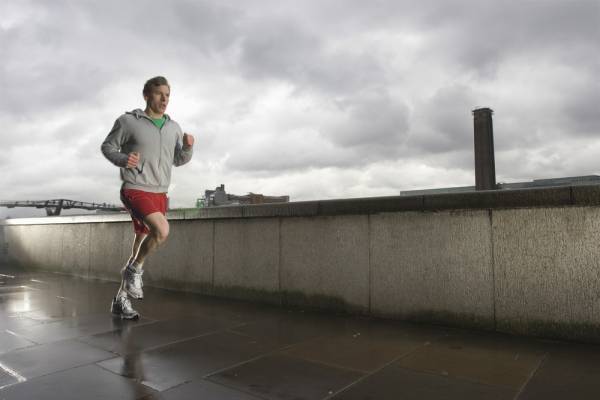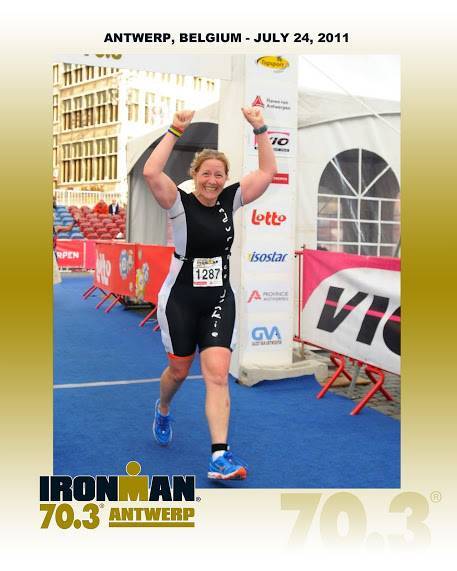Like many people, I have a love-hate relationship with running. There are days I come home from a run feeling exhilarated and on top of the world. Then there are days I come home wallowing in self-pity and misery. And this is precisely why I can’t seem to give it up.
Endurance athlete and coach Andrew Read called running “the killer app of the human body.” (Then again, he also called it “the exercise equivalent of vegetables.“) But though it may be one of the most basic human forms of exercise, injury statistics suggest running isn’t always as easy as other natural activities, probably due to our modern lifestyles. So, if you’re considering getting started, here are some tips from our coaches.
Runner’s high is a real thing, and so is runner’s low.
1. What Gear Do I Need?
First comes the fun part: the gear! In her article, A Beginner’s Guide to Running Gear, coach and runner Jannine Myers listed some of the essentials you need to get started with running:
- Shoes
- Apparel
- Sunscreen
- Hat and visor
- Sunglasses
- Hydration pack or handheld bottle
- Reflective clothing or accessories
Check out the article for Jannine’s brand recommendations. Although these items might seem unnecessary at first, they will make your running experience much more enjoyable, which will make you more likely to keep up with it.
2. What Kind of Shoes Are Best for Me?
It’s not just a gimmick – running shoes do matter. Although you might be tempted to run out and by the cutest or trendiest shoes, the most important step in finding the best shoes is to get fitted. This is especially true if you plan to run long distances. Amy Hester discussed the importance of getting fitted for shoes in her article, 9 Things I Wish I Had Known When I Started Running:
Take the time to get fitted. Your local running store should be able to figure out what kind of shoe you need (yes, supination and pronation are real things). I’m pretty sure the shoes I ran that first road marathon in were trail shoes that were at least a half-size too small, judging by the condition of my feet at the end. Learn from my mistakes, love your feet, and go get fitted.
For more advice on purchasing your first pair of running shoes, read Ruggero Lodo’s comprehensive article, Running Shoes: What You Need to Know to Buy the Right One for You.
3. How Do I Get Started?
So you have all the gear you need, and now it’s time to start running. You might have heard you should start with sprints to build your conditioning, but coach Andrew Read has a different idea:
If you were a beginner in the gym no one would think to load you up with a maximum load straight away. Yet when you tell people you want to run the first thing they say is, “You should do sprints.” I have to say I believe that to be the single stupidest piece of popular fitness advice in today’s fitness industry.
Running fast puts an enormous strain on the body – far more than a heavy squat or deadlift session ever could, with loads of up to eight times body weight recorded in sprinting. Compare that to a “heavy” squat session for a beginner that wouldn’t even have full body weight as load on the bar and you start to see how damaging urging an underpowered and poorly aligned novice to sprint can be.
Instead, Andrew recommends starting with a walk/run program. I used this template when getting back into running after my last pregnancy with great results:
I like to begin with sets of five minutes. The first stage is thirty minutes total – jog one minute and walk four, repeated six times. Perform this three times per week.
Week 1 – Jog 1/Walk 4 x 6
Week 2 – Jog 2/Walk 3 x 6
Week 3 – Jog 3/Walk 2 x 6
Week 4 – Jog 4/Walk 1 x 6
For the next nine weeks, read Andrew’s article, A Week-by-Week Guide to Becoming a Runner (Later in Life and/or Safely).

4. I’m So Sore! What Am I Doing Wrong?
There are a lot of potential answers to this question, but there’s one big thing you can do to avoid excessive soreness after running: relax. Coach Becca Borawski Jenkins discussed the importance of relaxing during a run. Keep these three things in mind the next time you head out on the road:
- Relax your shoulders: Your shoulders should not be up in your ears. If you’re like me and have a martial arts background, this one isn’t easy. As my mentor Andy Petranek used to joke, I spent the first few years of my CrossFit training running like I was going to punch anyone who came near me. Slide your shoulder blades back and down. It will give your lungs more room and stop you from wasting energy on muscles that aren’t helping you move forward.
- Relax your hands: Your thumb should rest on the first knuckle of your forefinger, like you’re gently holding the wing of a butterfly, preventing it from escaping – but not ripping it’s wings off. Loosen your thumbs. Don’t mash them into your fingers, but don’t flex your thumb and fingers into crazy claw hands either. Just gently hold the butterfly wings.
- Relax your feet: Your feet should dangle from your ankles when you’re running. You don’t need to actively go into dorsiflexion or plantarflexion (pulling toes back or pointing toes). I promise you that your foot knows where to go. I’ve never seen anyone relax their feet and then suddenly wipe out. On the other hand, repeated dorsiflexion can lead to shin splints and too much focus on plantarflexion can lead to Achilles and calf issues. Do your feet feel loose and free? If you froze in the middle of a step and someone smacked the top of your foot, it should be loose enough that it would jiggle back and forth from the impact. (I might have been smacked on the feet by a few running coaches in my time, so trust me on this one.)
There’s one exception to this rule: make sure you keep tension in your core. To find out what that means, read the rest of Becca’s article, 5 Running Tips for the Non-Runner (From a Non-Runner).
5. Can I Still Lift Weights?
Yes! The myth that strength training and running can’t go together has been debunked by many respectable coaches in the last decade, including RunningWOD founder Richard Airey. Richard discussed the importance of strength training for runners in his article, The RunningWOD Philosophy: Creating Endurance With Strength:
If done properly with sound technique and proper loading, runners will get more benefit from working with a barbell than using static poses and calisthenics to develop midline stability and core strength. Runners will become more athletic and grow stronger from doing various forms of pressing, squatting, and deadlifting. Most endurance athlete’s strength training programs consist of high reps with light weight, focusing on muscular endurance. RunningWOD’s training program focuses on getting strong, using lower reps and heavier weight. Getting strong means moving heavy weight. Heavy weight being a relative term because the more volume your run program has the less likely you’ll be moving the same amount weight as if you were only doing strength training.
Richard also shared a free four-week cycle of running and strength training workouts to improve your mile time. Access the first week by clicking here.
Coach Shannon Khoury shared one of my favorite strength training workouts for runners in her article, A Simple Plan for Stronger Running. I like to follow it with a short, easy run:
Warm Up
- 5-10 minutes easy-pace rowing (or similar)
Glute Circuit (3 times)
- 12 hip bridges
- 10 side clams (on each side)
Single-Leg Squat Progression
- 6×3 each leg
- 8 x empty bar plus 2-3 more warm-up sets
- 8×3 working sets (add 5lbs every three sessions or whatever feels right – just keep the progress moving)
Core Work (you can do these as a circuit or rest between)
- 10 x 3 TRX/ring/Jungle Gym rows
- Max tension RKC plank
- Side plank
- Bottoms-up kettlebell carry (focus on stride and stability over distance)
- Baby crawl (option to place 2.5lb plate on lumbar spine for stability)
Read Shannon’s article for video demos and more information.
6. Should I Sign Up for a Race?
Training for a race has several benefits. It gives you a goal. Usually you can find training groups in your area, so it provides a community to train with. And it’s a lot of fun. If you’re serious about running, I definitely recommend signing up for a race.
But which one do you choose? Marathon runner Christine Dahl shared a few questions to ask yourself before you sign up for a race:
- Does thinking about the race excite you?
- When is the race?
- What training is required?
- Does the race fit your life?
And then there are the more race-specific considerations, like course time limits and location. Read Christine’s article, 8 Things to Ask Yourself When Choosing Your First Race to determine which event is best for you.

Christine crossing the finish line.
Final Considerations
In his book, Born to Run – a fun read for anyone interested in running and elusive tribal peoples – Christopher McDougall describes why he started running. “In terms of stress relief and sensual pleasure, running is what you have in your life before you have sex. The equipment and desire come factory installed; all you have to do is let ‘er rip and hang on for the ride.”
This is the appeal of running: it’s a natural activity anyone can benefit from. When I was younger, I thought of runners as a specific breed of person, with a cookie-cutter body type and a high level of athletic ability. I’ve come to realize that running isn’t just for elite athletes, though. At a race you will see people of all ages, shapes, and sizes. So you might not think of yourself as a runner now, but wait and see how you feel after race day. Good luck!
Got any more tips or questions? Share in the comments below!
More Like This:
- How to Build Strength to Improve Running Efficiency
- A Simple Plan for Stronger Running
- Want to Be a Better Runner? Then Slow Down
- New on Pulse Beat Fit Today
Photos 1 and 2 courtesy of Shutterstock.






